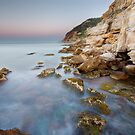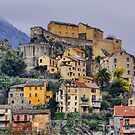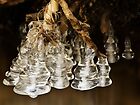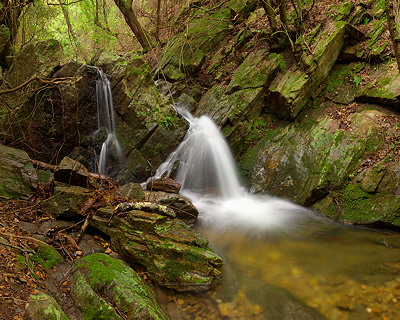 Provence waterfall
Provence waterfallI've started stitching digital images when i was still shooting film. After scanning slides, i was stitching them manually with a basic photo editing software to produce panoramics landscapes.
With digital shooting stitching can still help for panos or to produce some high definition files.
How does it work ?Imagine you are framing a shot with your DSLR and a 17 mm lens. If you use a longer lens, you can decompose the shot in more frames. Say 4 for example. But with the longer lens, you will capture more details in each shot and if you can stitch these shots together you will obtain a file with more pixels and most important, more details.
Here are some important points if you want to be able to stitch your shots and have a high quality result :
- Your shots must overlap.
- In most of cases, every shot should receive the same exposure. So set your camera on the manual mode.
- Your shots sould not include moving elements.
- For the best results, you should rotate you lens around an axis passing threw the entrance pupil of the lens to avoid parallax errors. So, you should use a sturdy tripod with a QTVR pano head.
About the last point : Today stitching softwares like
PTGui can often stitch images even if they are suffering of parallax errors and you can shoot without a specific pano head and sometimes without tripod. But if you want to use some wide angle lenses or shoot a landscape with an important forgeground the software can fail and the pano head is the only real solution. And in all cases, the tripod will improve image sharpness ...
The waterfall photograph illustrating the top of this post was produced by stitching 9 D200 images taken with a 28 mm lens and for the forest image, i've stitched 4 D200 photos made with a 35 mm lens.
As usual, i shot in raw mode, raw files were converted to 48 bits tif files with
SilkyPix and tif files were stitched with PTGui.
 Provence forest
Provence forest
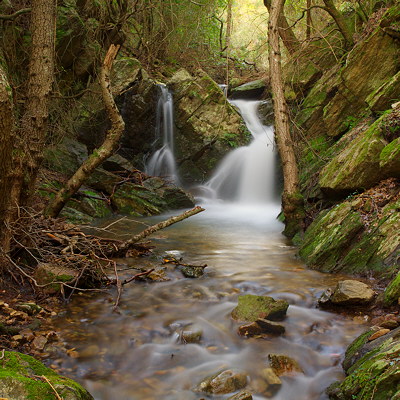
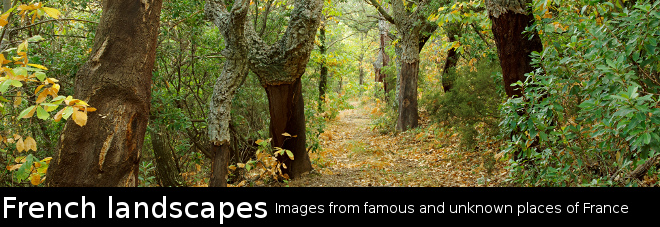
 Provence waterfall
Provence waterfall Provence forest
Provence forest


